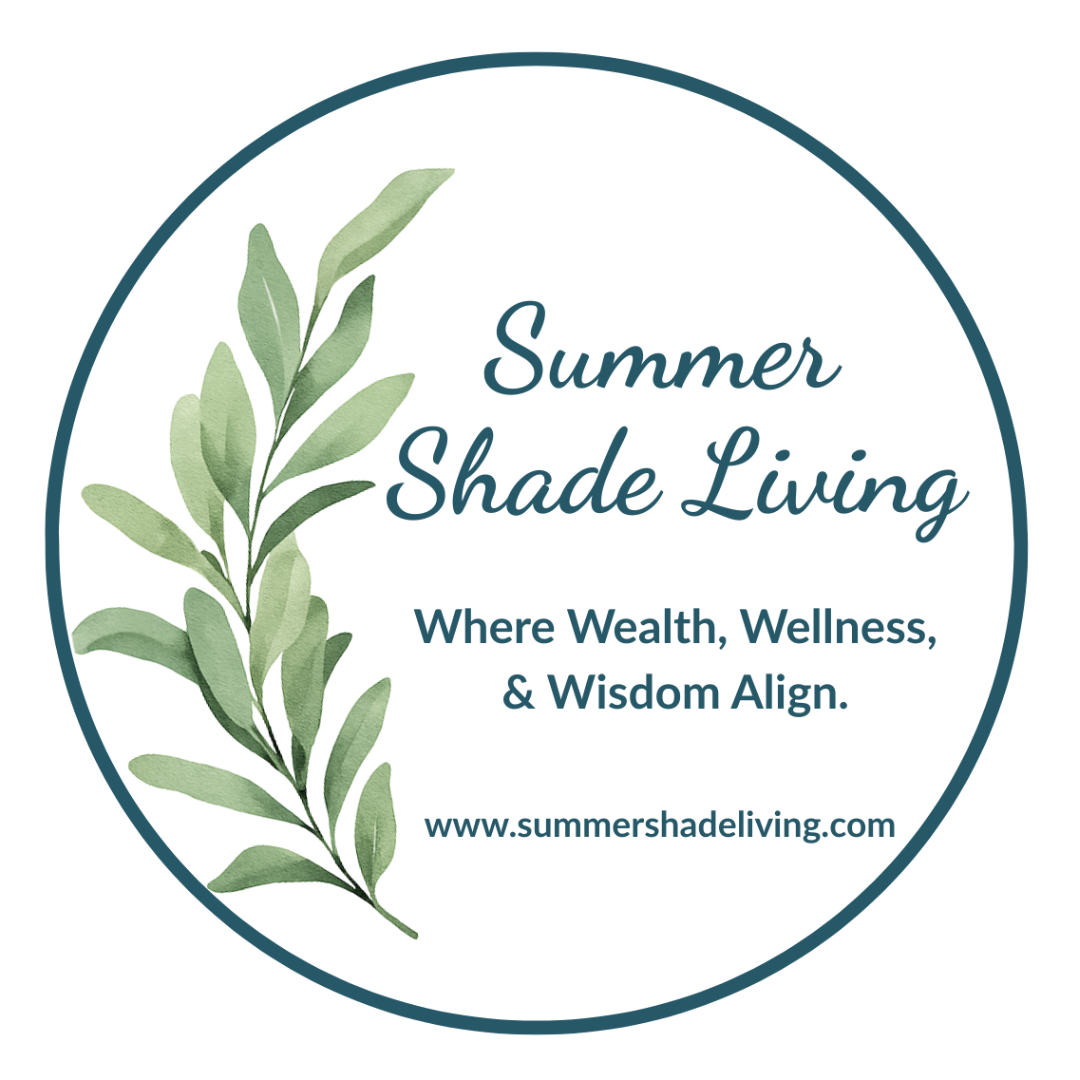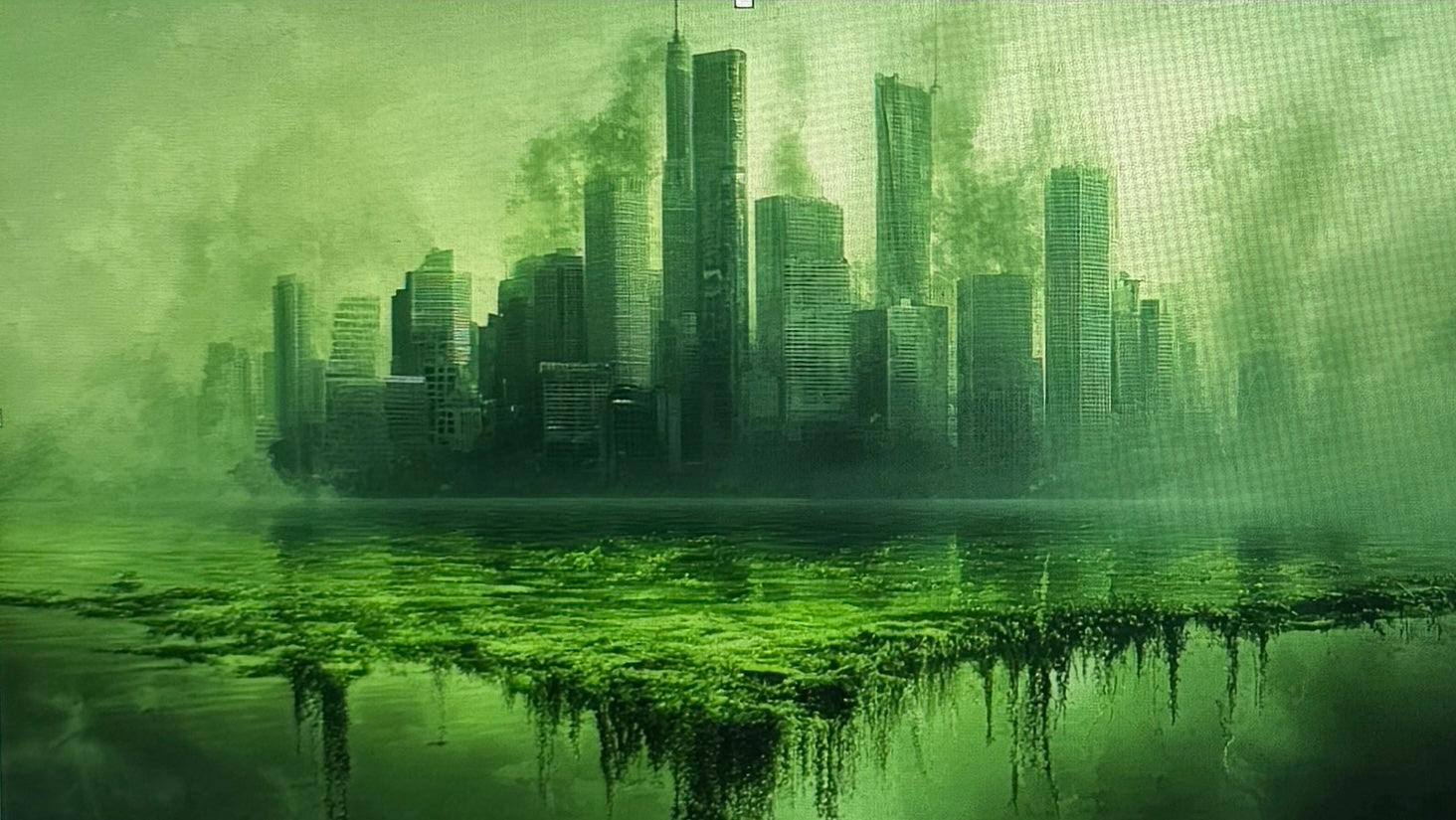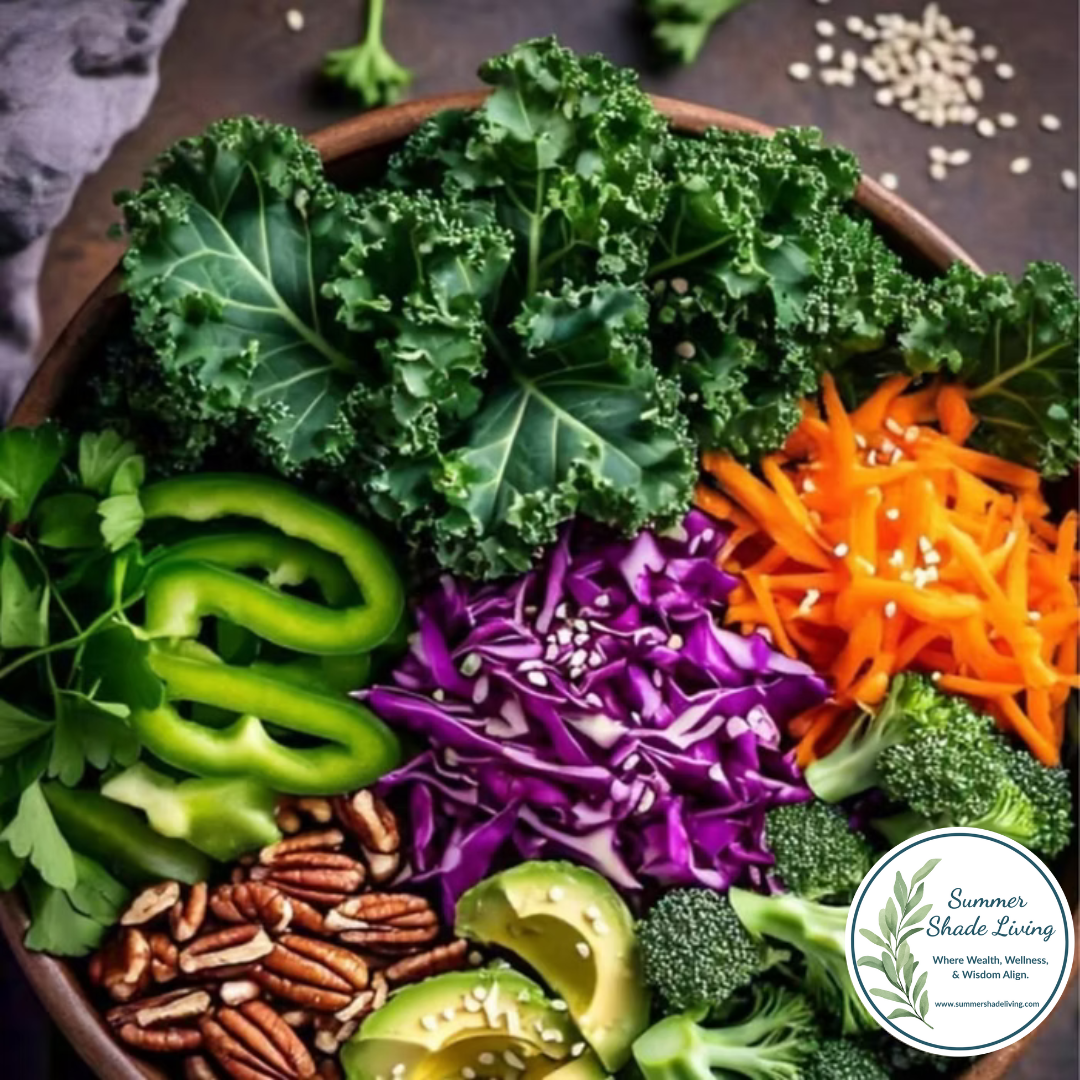Hey friend! 💚
Have you ever bought something because the label said eco-friendly or all-natural, only to find out later it wasn’t really what it claimed to be?

Yeah… me too. 😑
Hey friend! 💚
Have you ever bought something because the label said eco-friendly or all-natural, only to find out later it wasn’t really what it claimed to be? Yeah… me too. 😑
These days, nearly every company wants to look sustainable. They use leaves on their packaging🍃, soft green tones, and words like clean or green to make us feel like we’re making a good choice.
But guess what? A whole lot of it is just clever marketing.
It’s called greenwashing, and it’s more common than most people realize.

Let’s walk through what it is, how to spot it, and which brands are actually doing better—because if you care about your family, your health, and this beautiful planet 🌎, then you deserve to shop with confidence.
✨ And don’t worry—this isn’t about being perfect. It’s about being informed, empowered, and making the best choices we can. That’s what Summer Shade Living is all about.
What is Greenwashing, Really? 🤔
Greenwashing is when a company pretends to care about the environment just to sell more products.
They use words and pictures that sound eco-friendly, without actually changing how they operate.
In short, it’s when they say the right thing but don’t do the right thing.
And that’s not okay. Because it tricks good people into supporting companies that are doing more harm than good.
Here’s How to Spot It 👀
🌱 Fluffy buzzwords – “Green,” “natural,” “non-toxic,” “earth-loving”… but no proof or certification? Red flag 🚩
🌱 No transparency – Real eco-conscious brands show their ingredients, sourcing, and efforts. If they’re hiding it, they’re likely hiding something.
🌱 Nature imagery overload – A forest on the label doesn’t mean it’s sustainable. It might just mean their graphic designer is good 🙃
Real-World Greenwashing Examples
🚘 Volkswagen claimed their diesel cars were “clean”... while secretly installing software to cheat emissions tests. They were emitting up to 40x the legal pollution limit.
⛽️ BP (British Petroleum) tried to rebrand as “Beyond Petroleum” while still investing over 90% of its budget into fossil fuels.
🛢 ExxonMobil promoted algae-based fuels in ads but kept growing oil and gas output. They're still one of Earth’s top carbon polluters.
🥤 Coca-Cola said they’d collect every plastic bottle by 2030… but they’ve been the #1 plastic polluter globally for 5 years straight.
🍼 Nestlé announced recyclable packaging goals by 2025… but critics say they’ve made little progress and continue to flood the market with plastic.
☕️ Starbucks replaced straws with new lids—but those lids use more plastic than the old straw + lid combo.
🪑 IKEA was linked to illegal logging in Ukraine, despite being considered a sustainability leader.
💧 Bottled water brands like Evian, Poland Spring, and Deer Park feature snowy mountains on labels… but single-use plastic is a major pollution crisis—and they know it.
Why This Matters 😔
Because greenwashing slows down real progress.
Because we all want to do better—and deserve to know the truth.
Because when companies fake it, they make it harder for the good ones to thrive.
Most of us are already doing so much—trying to eat better, clean up our homes, reduce waste, and protect our kids from chemicals. We don’t need misleading packaging on top of it.
So… Which Brands Can You Trust?
Let’s talk about B Corps 💼🌿
These are businesses that go through a rigorous, third-party certification to prove they meet the highest standards in:
Environmental responsibility
Fair worker treatment
Community impact
Transparency & ethics
They’re legally required to consider people and the planet—not just profit.
Here are just a few B Corps worth supporting:
🧼 Dr. Bronner’s
🧥 Patagonia
🍦 Ben & Jerry’s
🛍 Etsy
👟 Allbirds
👚 Eileen Fisher
🧽 Seventh Generation
🍺 New Belgium Brewing
🍫 Alter Eco
🥖 King Arthur Baking
🍼 Happy Family Organics
🌼 Badger Balm
🌿 Traditional Medicinals
🥤 KeepCup
💄 The Body Shop
🧴 Alaffia
👖 Athleta
🍫 Divine Chocolate
🌍 Guayaki
📦 Method
These brands walk the walk—and when we buy from them, we vote for the kind of world we want. 🌎💚
A Personal Note: Why I Trust Young Living 💧
Let’s talk about Young Living—not as a brand pitch, but as a genuinely meaningful part of our clean living journey.
I’ve never pursued the MLM side of it and don’t care about that piece. What I do care about is this:
Their entire product line—essential oils, home cleaning, skincare, even toothpaste—has been a safe, powerful tool in reducing our family’s toxic load.
What I appreciate most is their ingredient transparency, quality sourcing, and commitment to clean formulas.
For us, switching to Young Living wasn’t about being trendy.
It was about taking small, intentional steps toward cleaner living—and those steps still shape our daily rhythm today. 🌸
Learn more here: https://www.myyl.com/summer-shade
Final Thoughts
You don’t have to change everything overnight.
Start small. Start where you are. Just stay aware—and ask questions.
Because you deserve to know what you’re bringing into your home.
Your family deserves the real deal.
And the Earth? She deserves better too. 🌎✨
We’re in this together, friend.
And at Summer Shade Living, we’ll always tell it to you straight—with love, with honesty, and with heart.
With Purpose & Peace,
The Summer Shade Living Team
These days, nearly every company wants to look sustainable. They use leaves on their packaging 🍃, soft green tones, and words like clean or green to make us feel like we’re making a good choice.
But guess what? A whole lot of it is just clever marketing.
It’s called greenwashing, and it’s more common than most people realize.
Let’s walk through what it is, how to spot it, and which brands are doing better—because if you care about your family, your health, and this beautiful planet 🌎, then you deserve to shop with confidence.
✨ And don’t worry—this isn’t about being perfect. It’s about being informed, empowered, and making the best choices we can. That’s what Summer Shade Living is all about.
What is Greenwashing? 🤔
Greenwashing is when a company pretends to care about the environment just to sell more products.
They use words and pictures that sound eco-friendly, without actually changing how they operate.
In short, it’s when they say the right thing but don’t do the right thing.
And that’s not okay. Because it tricks good people into supporting companies that are doing more harm than good.
[Image: Blue shopping basket filled with colorful plastic cleaning product bottles labeled “Toxic Goods for Sale”]
Here’s How to Spot It 👀
🌱 Fluffy buzzwords – “Green,” “natural,” “non-toxic,” “earth-loving”… but no proof or certification? Red flag 🚩
🌱 No transparency – Real eco-conscious brands show their ingredients, sourcing, and efforts. If they’re hiding it, they’re likely hiding something.
🌱 Nature imagery overload – A forest on the label doesn’t mean it’s sustainable. It might just mean their graphic designer is good 🙃
Real-World Greenwashing Examples
🚘 Volkswagen claimed their diesel cars were “clean”... while secretly installing software to cheat emissions tests. They were emitting up to 40x the legal pollution limit.
⛽️ BP (British Petroleum) tried to rebrand as “Beyond Petroleum” while still investing over 90% of its budget into fossil fuels.
🛢 ExxonMobil promoted algae-based fuels in ads but kept growing oil and gas output. They're still one of Earth’s top carbon polluters.
🥤 Coca-Cola said they’d collect every plastic bottle by 2030… but they’ve been the #1 plastic polluter globally for 5 years straight.
🍼 Nestlé announced recyclable packaging goals by 2025… but critics say they’ve made little progress and continue to flood the market with plastic.
☕️ Starbucks replaced straws with new lids—but those lids use more plastic than the old straw + lid combo.
🪑 IKEA was linked to illegal logging in Ukraine, despite being considered a sustainability leader.
💧 Bottled water brands like Evian, Poland Spring, and Deer Park feature snowy mountains on labels… but single-use plastic is a major pollution crisis—and they know it.
[Image: Protesters in hazmat suits holding signs that say “Toxic Greenwash Hazard” outside a corporate building]
Why This Matters 😔
Because greenwashing slows down real progress.
Because we all want to do better and deserve to know the truth.
Because when companies fake it, they make it harder for the good ones to thrive.
Most of us are already doing so much—trying to eat better, clean up our homes, reduce waste, and protect our kids from chemicals. We don’t need misleading packaging on top of it.
So… Which Brands Can You Trust?
Let’s talk about B Corps 💼🌿
These are businesses that go through a rigorous, third-party certification to prove they meet the highest standards in:
Environmental responsibility
Fair worker treatment
Community impact
Transparency & ethics
They’re legally required to consider people and the planet, not just profit.
Here are just a few B Corps worth supporting:
🧼 Dr. Bronner’s
🧥 Patagonia
🍦 Ben & Jerry’s
🛍 Etsy
👟 Allbirds
👚 Eileen Fisher
🧽 Seventh Generation
🍺 New Belgium Brewing
🍫 Alter Eco
🥖 King Arthur Baking
🍼 Happy Family Organics
🌼 Badger Balm
🌿 Traditional Medicinals
🥤 KeepCup
💄 The Body Shop
🧴 Alaffia
👖 Athleta
🍫 Divine Chocolate
🌍 Guayaki
📦 Method
These brands walk the walk—and when we buy from them, we vote for the kind of world we want. 🌎💚
A Personal Note: Why I Trust Young Living 💧
Let’s talk about Young Living—not as a brand pitch, but as a genuinely meaningful part of our clean living journey.
I’ve never pursued the MLM side of it and don’t care about that piece. What I do care about is this: Their entire product line—essential oils, home cleaning, skincare, even toothpaste—has been a safe, powerful tool in reducing our family’s toxic load.
What I appreciate most is their ingredient transparency, quality sourcing, and commitment to clean formulas.
For us, switching to Young Living wasn’t about being trendy.
It was about taking small, intentional steps toward cleaner living, and those steps still shape our daily rhythm today. 🌸
Learn more here: https://www.myyl.com/summer-shade
Final Thoughts
You don’t have to change everything overnight.
Start small. Start where you are. Just stay aware—and ask questions.
Because you deserve to know what you’re bringing into your home.
Your family deserves the real deal.
And the Earth? She deserves better, too. 🌎✨
We’re in this together, friend.
And at Summer Shade Living, we’ll always tell it to you straight—with love, with honesty, and with heart.
With Purpose & Peace,
The Summer Shade Living Team




Leave a comment
All comments are moderated before being published.
เว็บไซต์นี้ได้รับการคุ้มครองโดย hCaptcha และมีการนำนโยบายความเป็นส่วนตัวของ hCaptcha และข้อกำหนดในการใช้บริการมาใช้